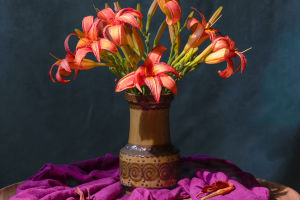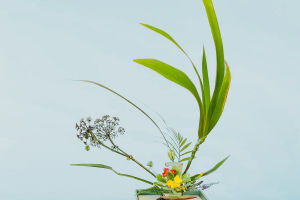Floral Harmony Artistry
The interplay between vases and flowers is a sophisticated art that epitomizes beauty, harmony, and elegance.
This art form, steeped in tradition and creativity, allows for endless expressions of style and emotion.
The harmony between vases and flowers enhances aesthetic appeal, conveys sentiments, and transforms spaces, making it a cherished practice across cultures and eras.
Historical Context
The tradition of using vases to display flowers dates back to ancient civilizations.
In Egypt, Greece, and Rome, vases were not only functional but also decorative, often intricately designed to reflect cultural symbols and stories.
In East Asia, particularly in China and Japan, the art of floral arrangement, known as Ikebana in Japan, became highly ritualized.
The choice of vase and the arrangement of flowers were imbued with symbolic meaning, reflecting principles of harmony, balance, and simplicity.
This historical context underscores the deep-rooted significance of achieving harmony between vases and flowers.
Aesthetic Principles
Creating a harmonious floral arrangement involves a keen understanding of several aesthetic principles. The choice of vase plays a crucial role in determining the overall impact of the arrangement.
Vases come in various shapes, sizes, colors, and materials, each bringing a unique character to the display. A simple, minimalist vase can enhance the natural beauty of the flowers, while an ornate, colorful vase might complement more subdued blooms.
The selection of flowers is equally important. The colors, shapes, and sizes of the flowers must complement the vase to create a cohesive look.
For instance, tall, slender flowers like lilies or delphiniums are well-suited to narrow, elongated vases, while a wide, round vase might be better paired with a fuller arrangement of roses or peonies.
The goal is to achieve a balance where neither the vase nor the flowers overshadow each other, but instead, they work together to create a unified, pleasing composition.
Emotional and Symbolic Resonance
The harmony between vases and flowers extends beyond mere aesthetics; it also conveys deeper emotional and symbolic messages. Different flowers carry various meanings—roses symbolize love, lilies represent purity, and sunflowers convey happiness.
The choice of vase can enhance these meanings. For example, a clear glass vase can symbolize transparency and honesty, while a vintage ceramic vase might evoke nostalgia and warmth.
In many cultures, specific combinations of vases and flowers are used to mark significant events. Weddings, funerals, and ceremonies often feature carefully chosen arrangements that reflect the occasion's mood and significance.
This practice highlights the power of harmonious floral displays to communicate emotions and create atmospheres that resonate with people on a profound level.
Transforming Spaces
One of the most tangible benefits of harmonious floral arrangements is their ability to transform spaces. A well-chosen vase and flower combination can enhance the ambiance of a room, making it more inviting and aesthetically pleasing.
In homes, offices, and public spaces, these arrangements can serve as focal points that draw the eye and create a sense of tranquility and beauty.
Interior designers and decorators often use floral arrangements to complement the overall design scheme of a space.
The colors and styles of the arrangements can echo the room's palette and decor, creating a cohesive and harmonious environment.
This ability to enhance and transform spaces underscores the practical and artistic value of mastering the harmony between vases and flowers.


